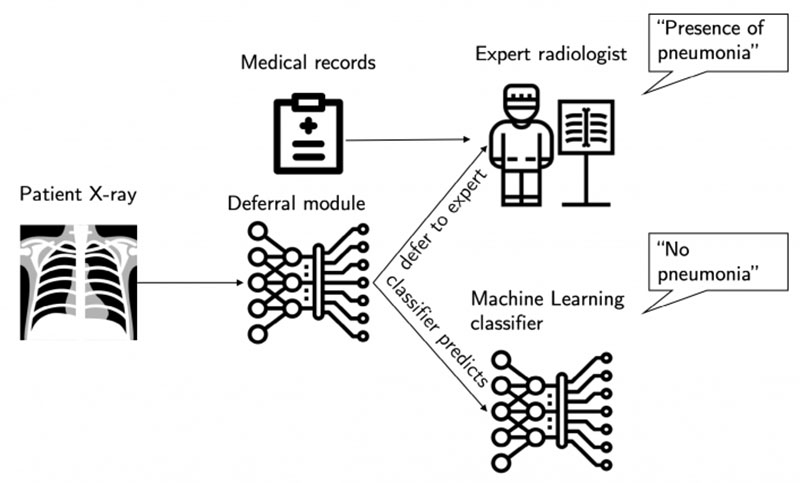First established as a field in 1956, Artificial Intelligence (AI) is the ability of computer algorithms to approximate conclusions without direct human input. In healthcare, AI is simplifying the lives of doctors, patients, and hospital administrators by performing tasks that are typically done by humans, but in less time and at a fraction of the cost.
Read more How FDA is Backing the Use of Artificial Intelligence in Telemedicine
Researchers at MIT and elsewhere have used machine learning to help radiologists better detect different forms of cancer. But what’s tricky about these hybrid approaches is understanding when to rely on the expertise of people versus programs. This isn’t always merely a question of who does a task “better;” indeed, if a person has limited bandwidth, the system may have to be trained to minimize how often it asks for help.
To tackle this complex issue, researchers from MIT’s Computer Science and Artificial Intelligence Lab (CSAIL) have developed a machine learning system that can either make a prediction about a task or defer the decision to an expert. Most importantly, it can adapt when and how often it defers to its human collaborator, based on factors such as its teammate’s availability and level of experience, reports Adam Conner-Simons in MIT News.
The system was trained to look at chest X-rays to diagnose specific conditions such as atelectasis (lung collapse) and cardiomegaly (an enlarged heart). In the case of cardiomegaly, the researchers found that their human-AI hybrid model performed 8 percent better than either could on their own (based on AU-ROC scores).

“In medical environments where doctors don’t have many extra cycles, it’s not the best use of their time to have them look at every single data point from a given patient’s file,” says Ph.D. student Hussein Mozannar, lead author with David Sontag, the Von Helmholtz Associate Professor of Medical Engineering in the Department of Electrical Engineering and Computer Science, of a new paper about the system that was recently presented at the International Conference of Machine Learning. “In that sort of scenario, it’s important for the system to be especially sensitive to their time and only ask for their help when absolutely necessary.”
The system has two parts: a “classifier” that can predict a certain subset of tasks, and a “rejector” that decides whether a given task should be handled by either its own classifier or the human expert.
Through experiments on tasks in medical diagnosis and text/image classification, the team showed that their approach not only achieves better accuracy than baselines but does so with a lower computational cost and with far fewer training data samples.
Read more MIT Researchers Develop New Method of Stimulating Neurons
In future work, the researchers plan to test their approach with real human experts, such as radiologists for X-ray diagnosis. They will also explore how to develop systems that can learn from biased expert data, as well as systems that can work with — and defer to — several experts at once.












